Lenovo ThinkBook Plus review: Lifting the lid on productivity
Adding a second E-Ink screen on top of this laptop is an unusual, but ultimately successful gambit
-
+
Smart dual-display design
-
+
Excellent keyboard
-
+
Added security
-
-
Flawed main screen
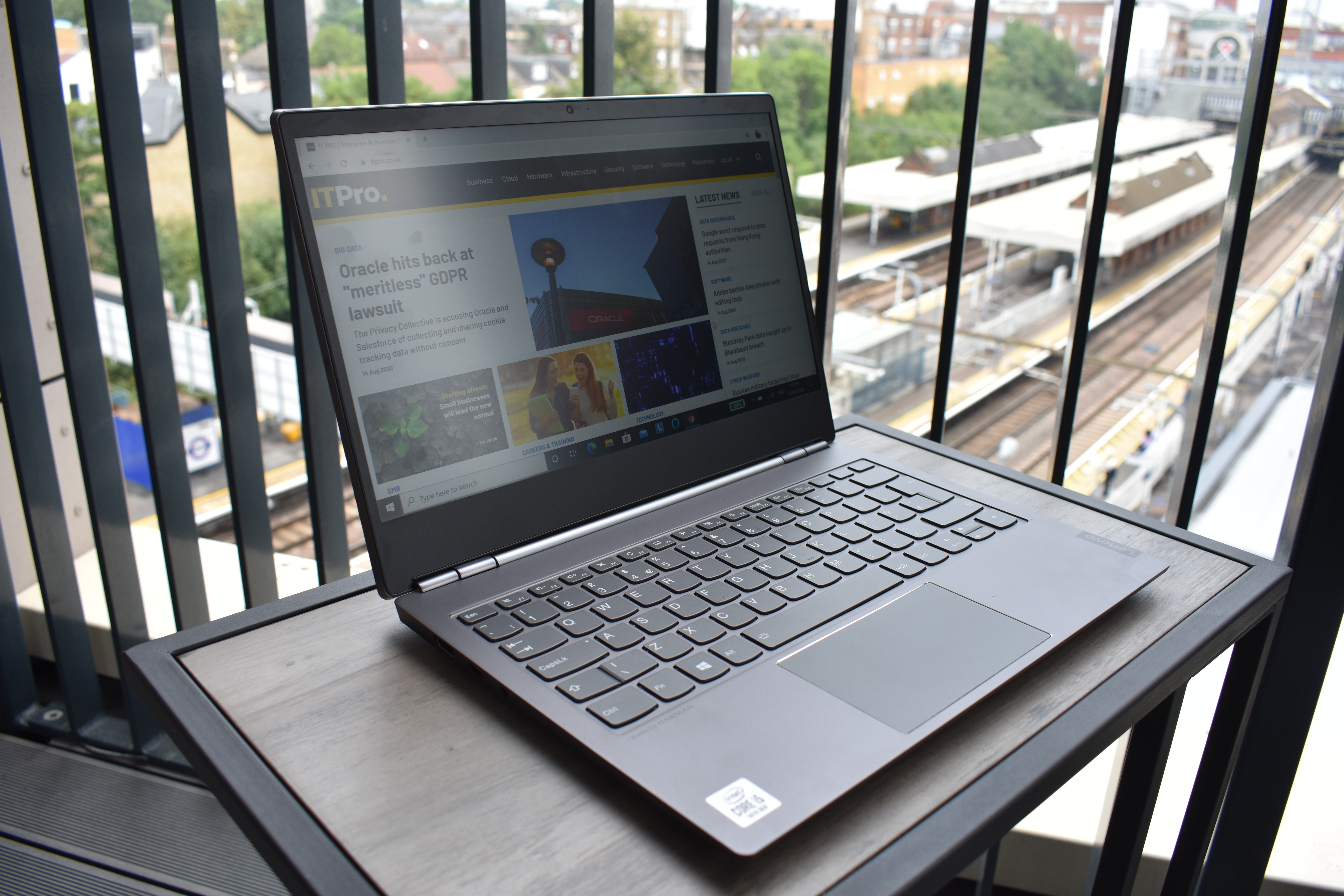
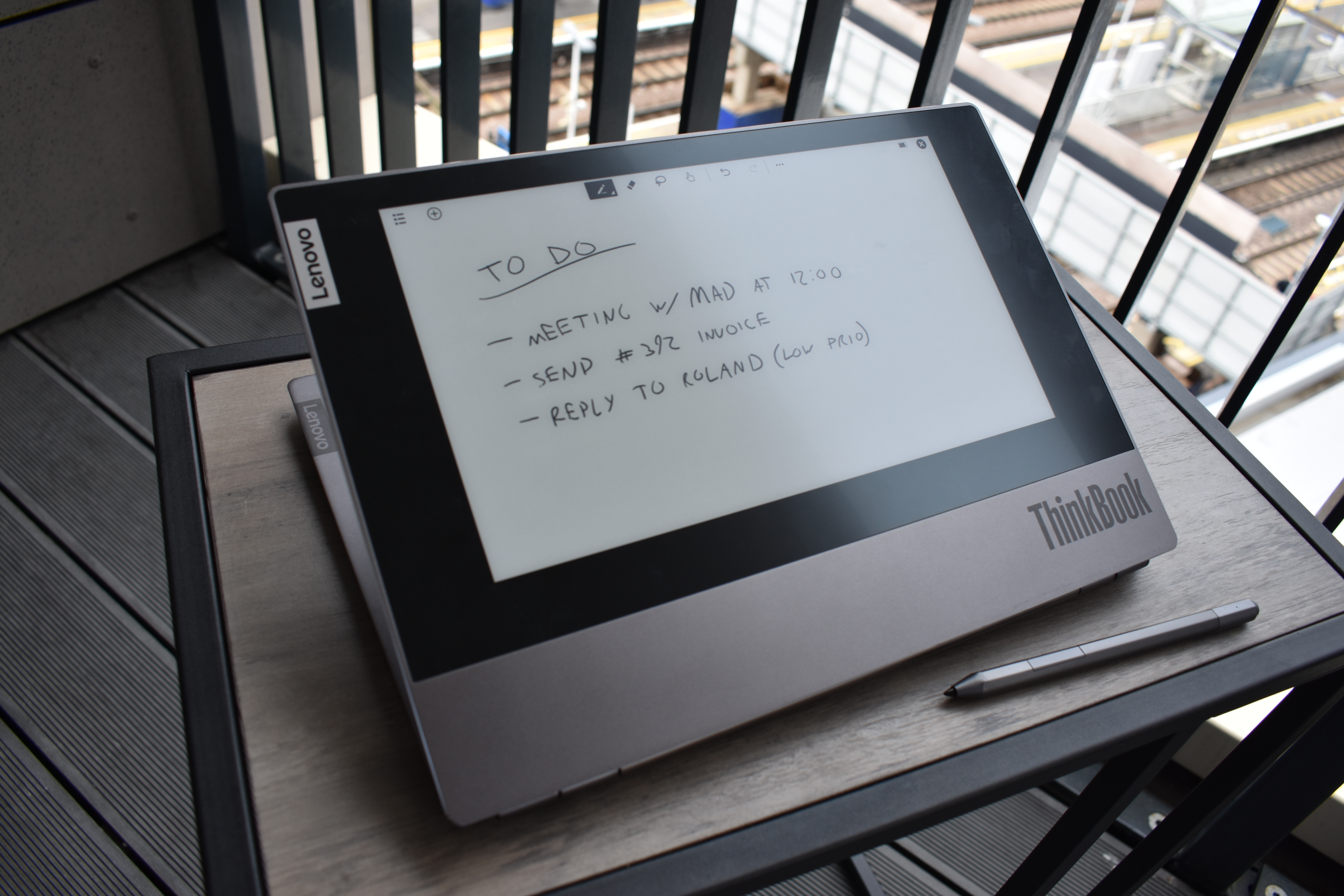
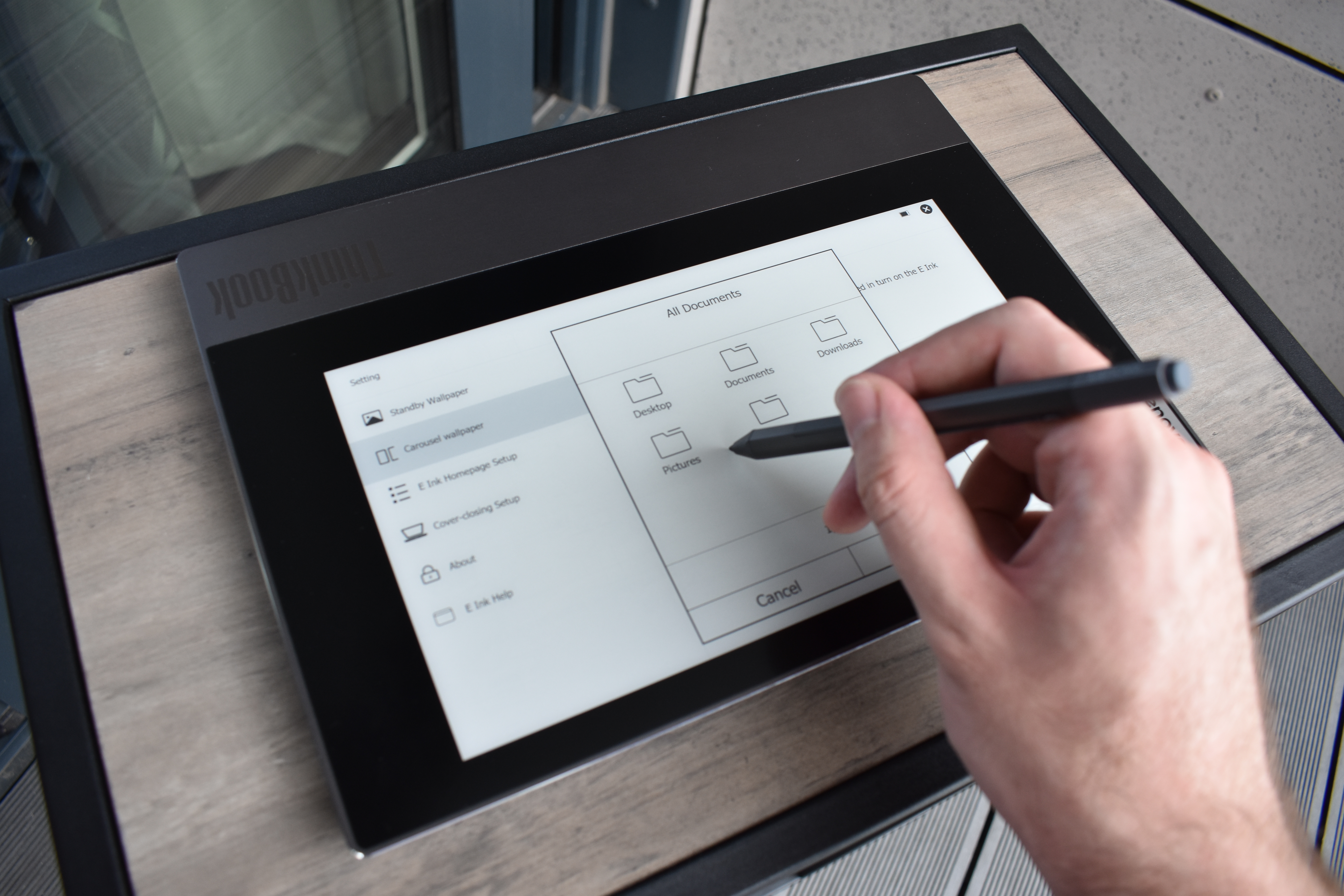
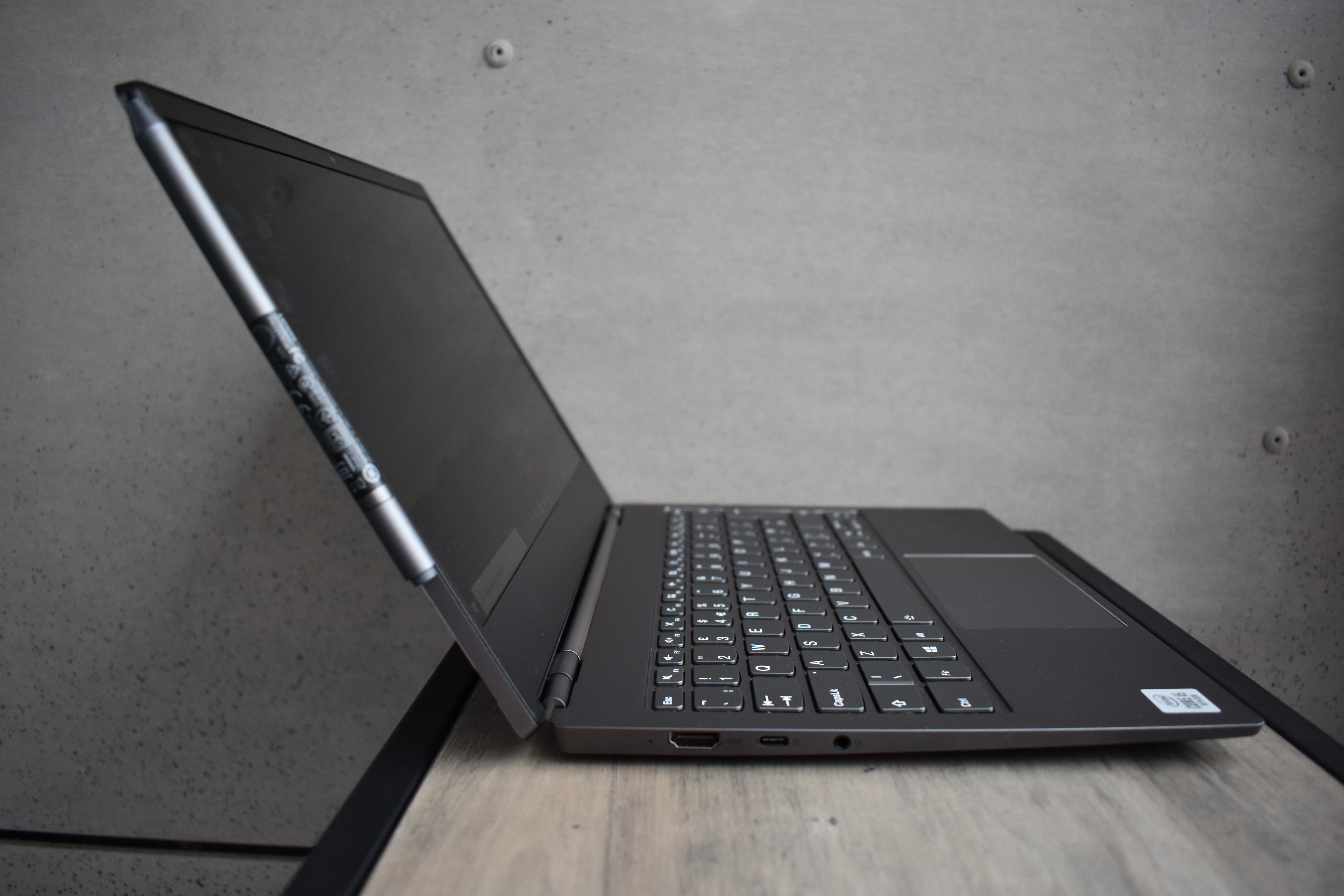
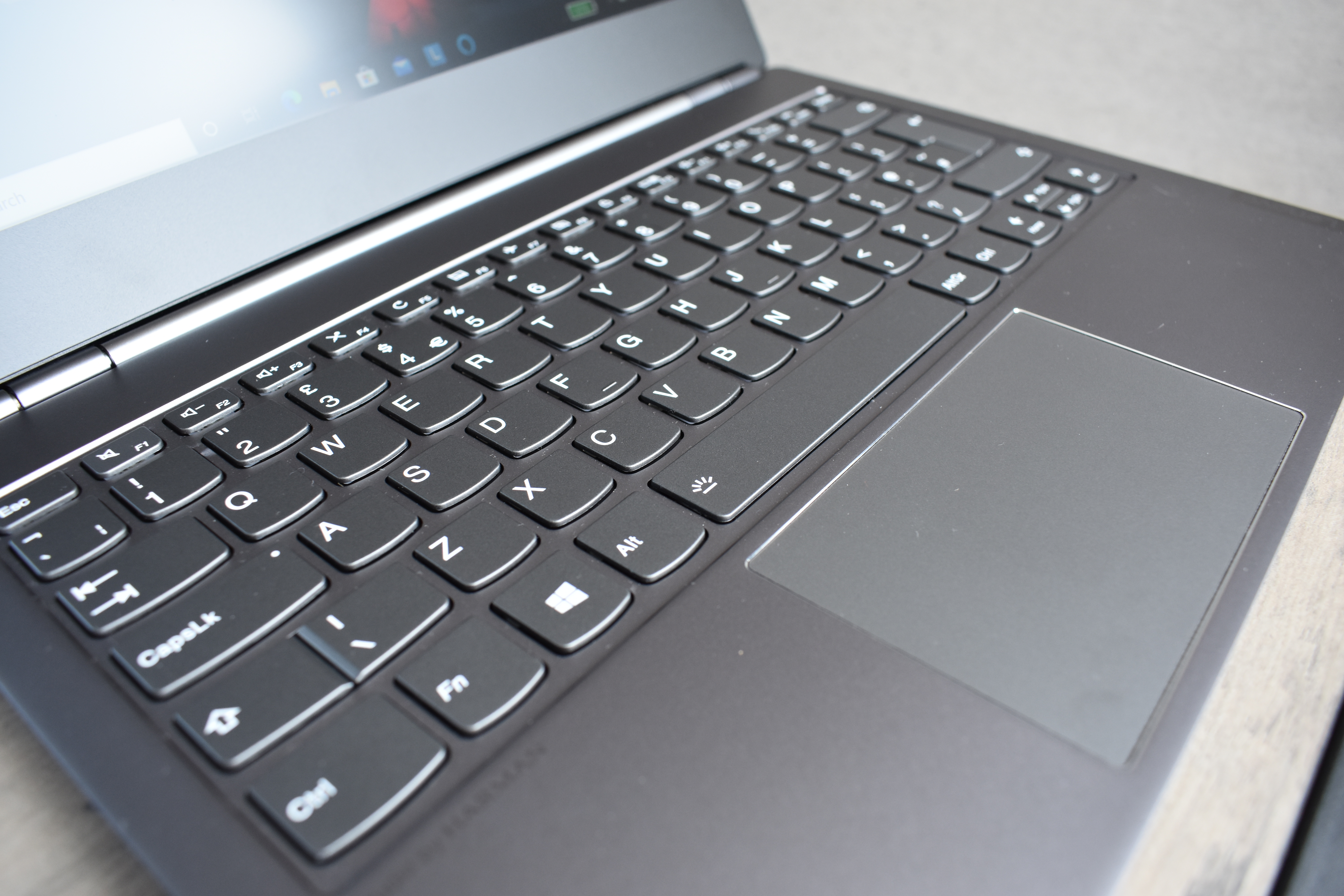

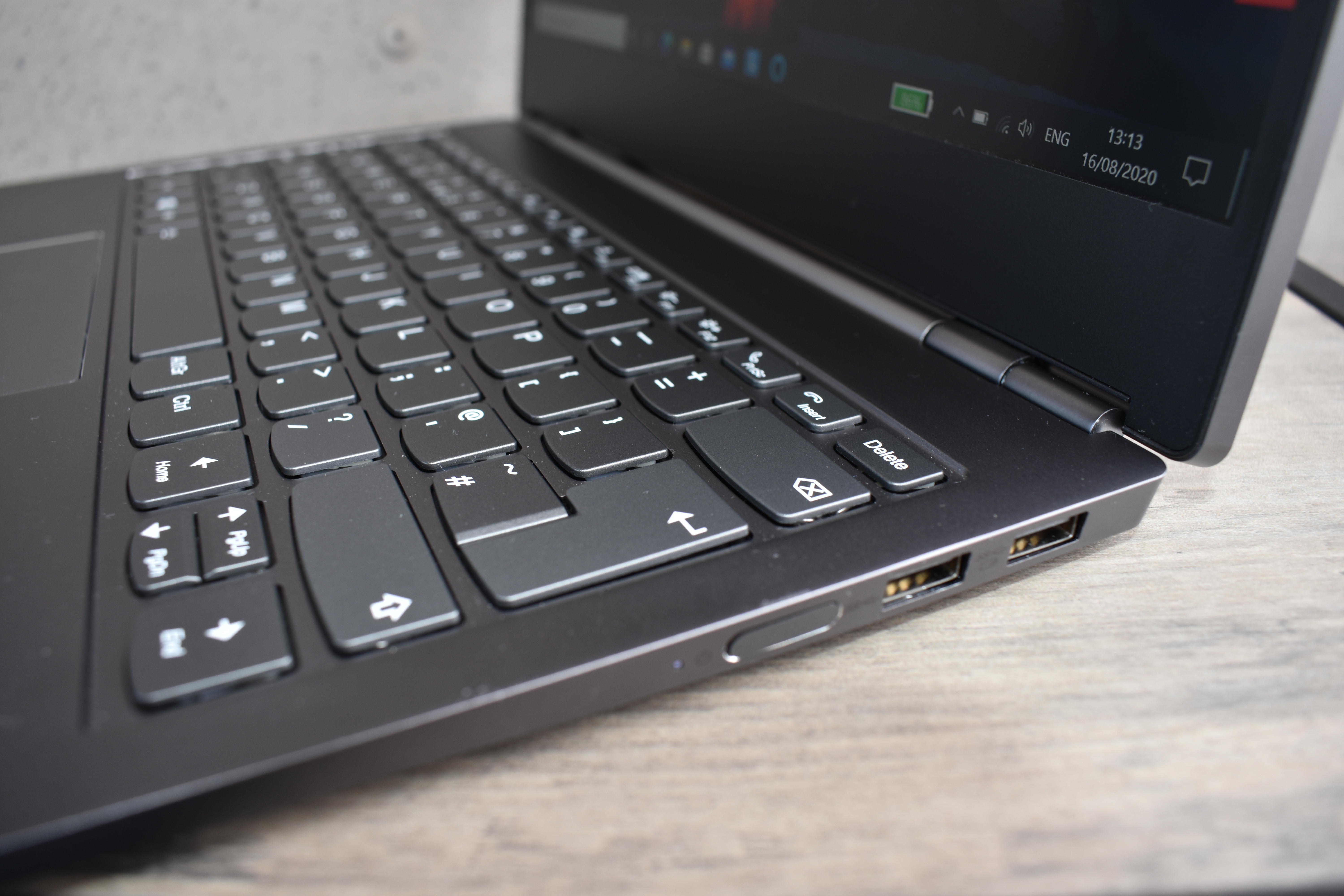
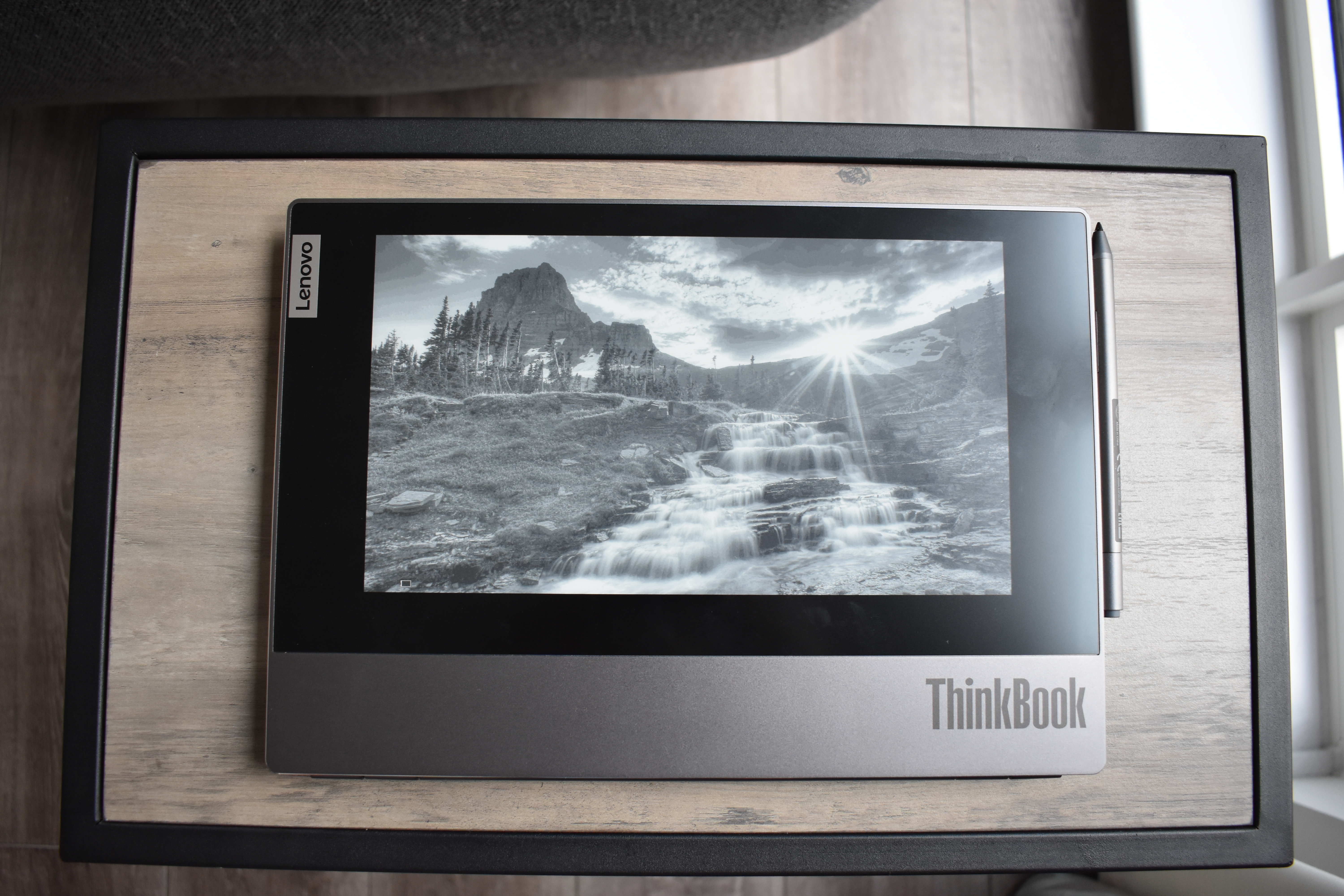
Lenovo is a practiced hand at incorporating E-Ink displays - the kind you’d get on e-readers like the Amazon Kindle - into its laptops, resulting in forward-thinking dual-screen devices at lower cost and battery life impact than if there was a second IPS or OLED screen.
The problem so far has been that, on both the original Yoga Book series and the more recent Yoga Book C930, the E-Ink screen always replaced the keyboard and trackpad, forcing the screen to replicate them (unconvincingly) as purely digital inputs.
With the Yoga Book Plus, Lenovo has seemingly found a more sensible place to put the second screen. It sits on top of the lid, with a conventional 13.3in IPS display on the other side and, mercifully, a proper physical keyboard and trackpad in the base.
Lenovo ThinkBook Plus review: Design
This isn’t a flippy convertible like anything in the Yoga Book family, but it shares a fair few design traits: a strong, sturdy hinge, sensible styling and high build quality throughout.
At 17.4mm thick and weighing 1.4kg, the ThinkBook Plus is neither the pinnacle of ultraportable lightness nor an unappealingly chunky notebook. In fairness, the lid does need to make room for two screens, and there’s a little side benefit of this extra thickness: there’s enough of a flat edge of the lid’s sides that the bundled stylus can clamp onto either side magnetically. This is better than having it stick to either side of the base, where it could get in the way of the ports.
The E-Ink display itself measures a tablet-sized 10.8in across the diagonal. However, before becoming too wowed by having a screen essentially on the outside, remember that it’s located in a place that’s usually built to protect the laptop - from knocks and shocks when being carried in a bag, or from the weight of anything that might casually be stacked on top of it when the lid is shut. On balance we still prefer this design to one where the second display replaces the physical keyboard, but it does mean that the ThinkBook Plus really needs to be handled with kid gloves, lest you scratch or crack its USP.
Luckily, there’s a rigidly padded carrying case included in the box - a great freebie, as is the comfortably-proportioned stylus.
Also deserving a mention are the speakers. Laptop speakers are, by and large, rubbish, but there’s a surprising amount of depth and warmth to the ThinkBook Plus’ downward-firing drivers. This is a rare laptop that’s good enough for casual music listening as well as Zoom calls.
Lenovo ThinkBook Plus review: Keyboard and trackpad
It’s a little telling that the only Lenovo laptops without great keyboards are the ones that ditch them in favour of digital keys. The ThinkBook Plus shows that the old ways can be the best: its perfectly sized and spaced keys, which depress with a satisfying firmness, are a pleasure to type on.
There’s no little red mouse pointer or physical left and right mouse buttons, as per the traditional ThinkPad style, but the smooth and sprightly trackpad meant we didn’t miss it. Its diving board mechanism for click inputs also grants decisive and sharp feedback.

Lenovo ThinkBook Plus review: Displays
The main screen keeps things relatively simple. It’s a 13.3in, non-touch IPS panel running at 1,920x1,080, and for the most part, it performs just as well as it needs to. The resolution is sharp enough for a screen of this size, and as it covers 92% of the SRGB gamut with a high 1,559:1 contrast ratio, colours have an impactful punch.
At the same time, a couple of limitations prevent it from being much better than merely decent. We measured peak brightness at 340cd/m2, which is a bit middling, and its average delta-E of 7.89 is downright awful. In other words, the main screen is nice enough for web usage and creating documents, but don’t expect to use the ThinkBook Plus for any remotely colour-sensitive work.
The E-Ink display sounds even more shackled: it has the same 1080p resolution and works as a touchscreen, but is only black and white. Using the on-screen menu buttons also reveals a lack of responsiveness that’s at odds with the ThinkBook Plus’ performance elsewhere, often taking several seconds between a selection and the desired action.
And yet, when actually using the secondary screen, it doesn’t feel like a gimmick. At a basic level it can be used as a digital notepad for quick scribbles or calculations - swishes of the stylus are, mercifully, registered much faster than menu selections -, but it’s also a very handy tool for annotating PDFs with far less faff than a mouse and keyboard would involve.
It’s clever, too. Select a section of your handwritten notes, and you can copy a text version to Windows’ clipboard - from there it’s simply a case of popping the main screen back up and pasting the transcription. It’s reasonably accurate too, with the odd exception like turning an ‘o’ into a sad face emoji.

Of course, a lot of this functionality isn’t new to 2-in-1 laptops, including Lenovo’s previous E-Ink devices. However, having the touchscreen component on top of the lid - instead of merged with the main display, as on a conventional convertibles - means that you don’t need to flip the whole thing on a 360-degree hinge so that the keyboard is awkwardly exposed on the underside. This, in turn, keeps the ThinkBook Plus’ stylus-wielding side feeling a little more intuitive, even though the screen is monochrome and can be slow to respond.
It also allows you to essentially customise the laptop’s appearance, as you can set single images or a carousel to show on the E-Ink screen when not in use. There’s the option to display Windows notifications when the lid is closed, too.
Lenovo ThinkBook Plus review: Specs and performance
We tested the ThinkBook Plus’ base model, comprised of a quad-core 1.6GHz Intel Core i5-10210U, 8GB of RAM and a 256GB SSD; for £958 exc VAT you could alternatively have a Core i7-10510U, 16GB of RAM and a 512GB SSD.
We never felt slowed down by the Core i5 chip, though. In our 4K benchmarks the ThinkBook Plus scored 75 overall, which will be more than enough for general office software. Notably, it’s drastically faster than the Yoga Book C930, which only scored a distinctly disappointing 25 overall.
The SSD is impressively nippy too. We recorded a sequential read speed of 2,615MB/s, which is up there with the very fastest on the market, and its 1,833MB/s sequential write speed is very quick too. Really, the only issue with speed here comes when you want to use a menu on the E-Ink screen.

Lenovo ThinkBook Plus review: Battery
Its battery test result of 9hrs 30mins also represents a considerable improvement on the Yoga Book C930. That said, if you want a laptop specifically to handle long stretches away from the mains, it’s worth looking elsewhere - the Dell XPS 13, Samsung Galaxy Book S and HP Spectre Folio all comfortably made it past ten hours.
Don’t blame the second display for this, though. E-Ink screens only consume power when the image changes, so unless you’re actively doodling on the screen or using it to navigate files, the secondary screen isn’t an extra drain at all. This is what allows the ThinkBook Plus to display your chosen image on the lid at all times, even when it’s completely shut down.
Lenovo ThinkBook Plus review: Ports and features
The ThinkBook Plus covers the basics on physical connectivity, albeit not much else: you get two USB 3.0 ports on the right edge, plus one USB-C port, a combined mic/headphone jack and a full-size HDMI output on the left. Any kind of SD or microSD card slot is conspicuously missing, and although having USB-C is nice, it’s also the charging port - so you lose it while topping up.
Conversely, Wi-Fi 6 connectivity and Bluetooth 5.0 make for a formidable wireless arsenal, and there is one neat trick hidden next to those USB 3.0 ports: the power button is also a fingerprint sensor. Despite its initially concerning thinness, it had no trouble at all reading our prints in an instant.
IT professionals will also be pleased to see this laptop running Windows 10 Pro, with all its security and management upgrades on Windows 10 Home. Fittingly, the CPU comes with a TPM 2.0 microprocessor as well, for storing encryption keys.

Lenovo ThinkBook Plus review: Verdict
Even without the E-Ink display, the ThinkBook Plus would be a perfectly respectable mid-range ultraportable. It’s well made, extremely comfortable to type on, and offers decent horsepower without knackering battery life for it.
Throw in the added functionality of a secondary touchscreen, and for well under £1,000 the ThinkBook Plus starts looking like a very good deal indeed. It’s important to remember that this isn’t a dual-screen laptop in the same vein as Asus’s ZenBook Duo UX481 or ZenBook 14 UX433FA, which keep their colour screens to hand to provide extra functionality while you’re still primarily using the keyboard and trackpad; here, it’s either/or, as while you don’t need to fully close the lid to access the E-Ink panel you will at least need to turn the chassis around.
This isn’t an inherently inferior approach, though, as the lid position allows for a much larger screen which is therefore better at replicating the note-taking and annotation talents of a tablet - all without the cost and battery drain of turning the main IPS display into a touchscreen.
As long as you’re careful not to crack it, then, the ThinkBook Plus is Lenovo’s most successful E-Ink experiment so far, and a fine alternative to 2-in-1 convertibles.
Lenovo ThinkBook Plus specifications
| Processor | Quad-core 1.6GHz Intel Core i7-10210U |
| RAM | 8GB |
| Graphics adapter | Intel UHD Graphics 620 |
| Storage | 256GB SSD |
| Screen size | 13.3in (primary), 10.8in (secondary) |
| Screen resolution | 1,920x1,080 (primary and secondary) |
| Screen type | IPS (primary), E-Ink (secondary) |
| Touchscreen | Yes (secondary only) |
| Optical drive | N/A |
| Graphics outputs | 1x HDMI |
| Other ports | 2x USB 3.0, 1x USB-C, 1x mic/headphone |
| Webcam | 1 megapixel |
| Wi-Fi | 802.11ax |
| Bluetooth | Bluetooth 5.0 |
| NFC | N/A |
| Dimensions (WDH) | 308 x 217 x 17.4mm |
| Weight | 1.4kg |
| Battery size | 45WHr |
| Operating system | Windows 10 Pro |
Get the ITPro daily newsletter
Sign up today and you will receive a free copy of our Future Focus 2025 report - the leading guidance on AI, cybersecurity and other IT challenges as per 700+ senior executives
-
 ‘Phishing kits are a force multiplier': Cheap cyber crime kits can be bought on the dark web for less than $25 – and experts warn it’s lowering the barrier of entry for amateur hackers
‘Phishing kits are a force multiplier': Cheap cyber crime kits can be bought on the dark web for less than $25 – and experts warn it’s lowering the barrier of entry for amateur hackersNews Research from NordVPN shows phishing kits are now widely available on the dark web and via messaging apps like Telegram, and are often selling for less than $25.
By Emma Woollacott Published
-
 Redis unveils new tools for developers working on AI applications
Redis unveils new tools for developers working on AI applicationsNews Redis has announced new tools aimed at making it easier for AI developers to build applications and optimize large language model (LLM) outputs.
By Ross Kelly Published
-
 Google layoffs continue with "hundreds" cut from Chrome, Android, and Pixel teams
Google layoffs continue with "hundreds" cut from Chrome, Android, and Pixel teamsNews The tech giant's efficiency drive enters a third year with devices teams the latest target
By Bobby Hellard Published